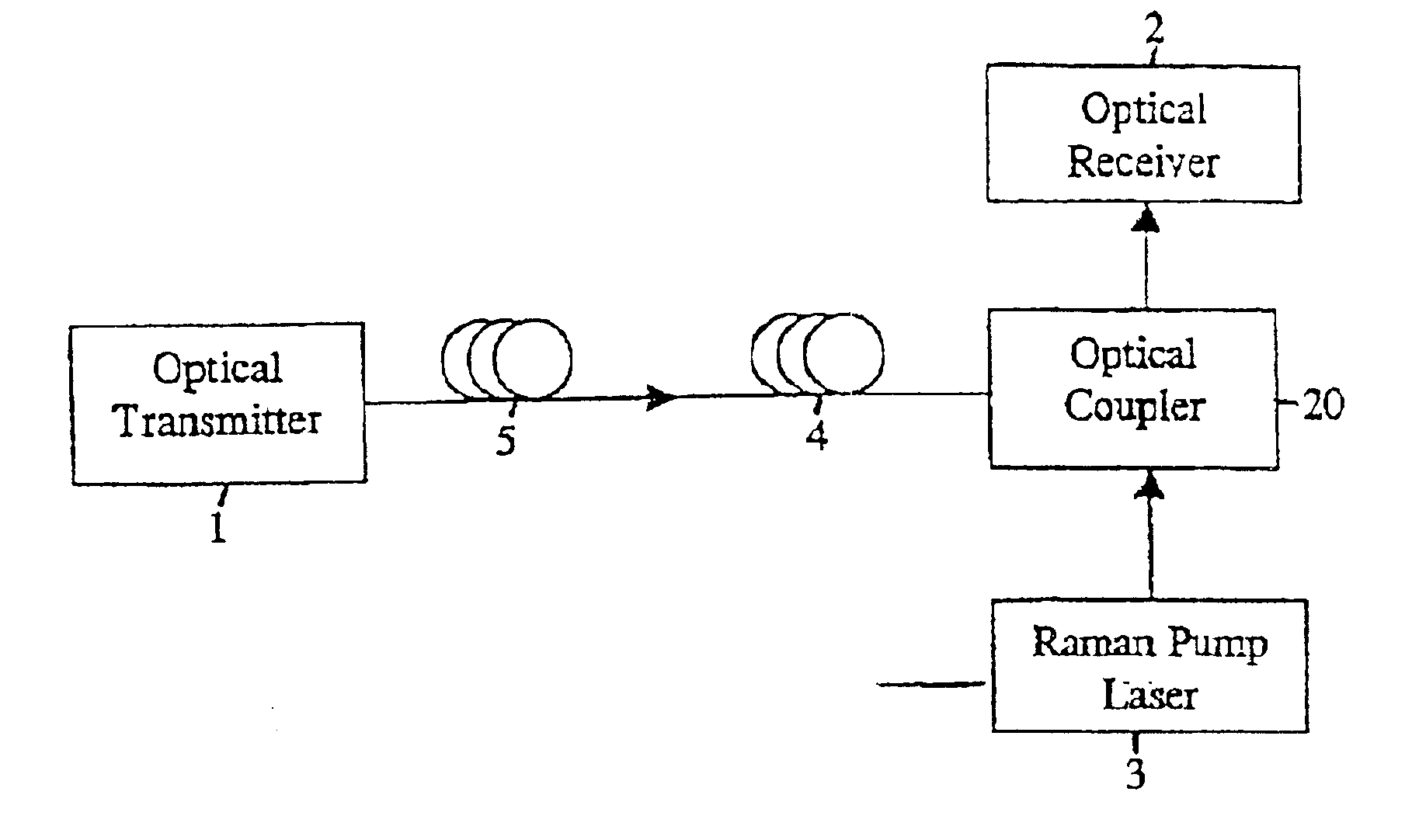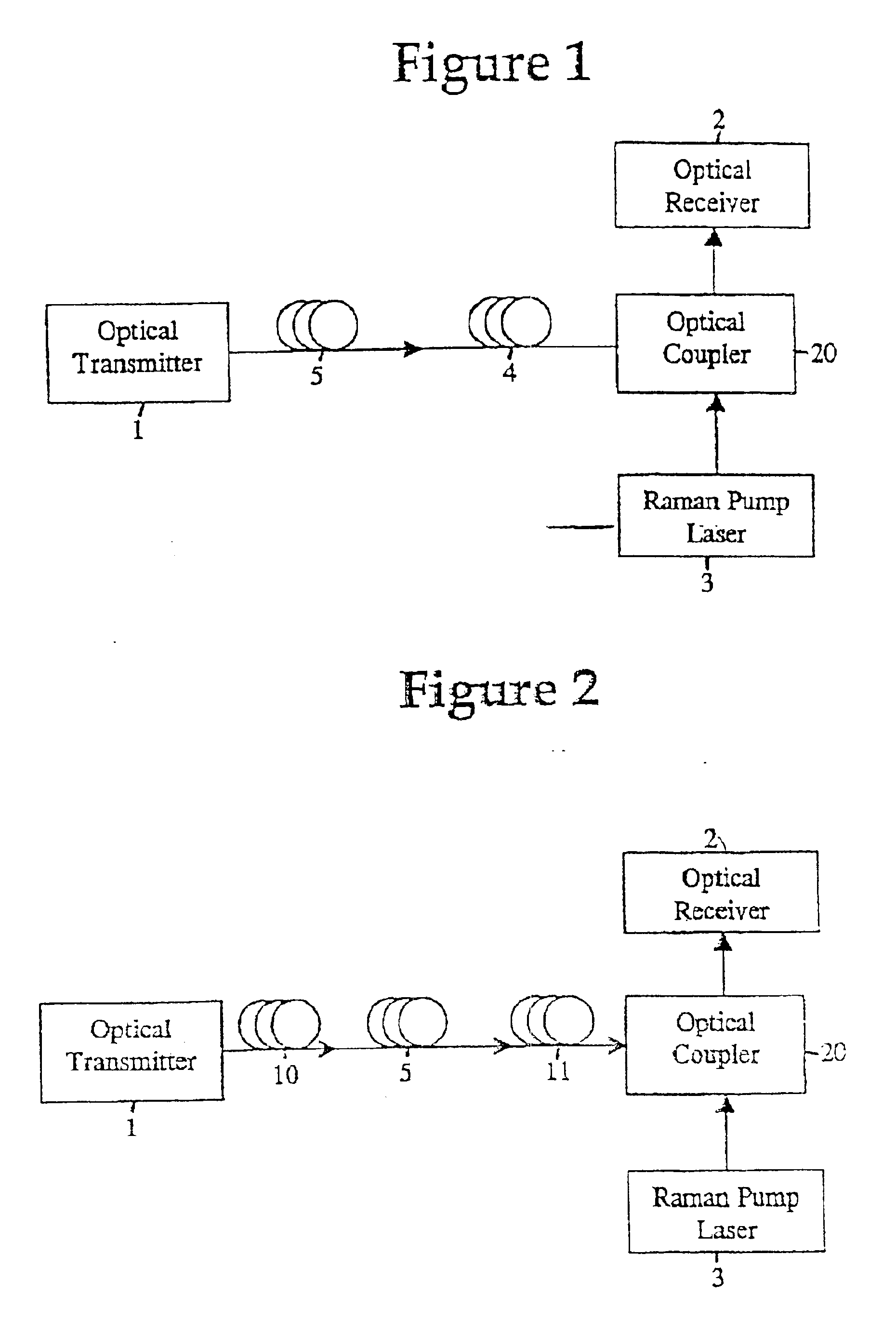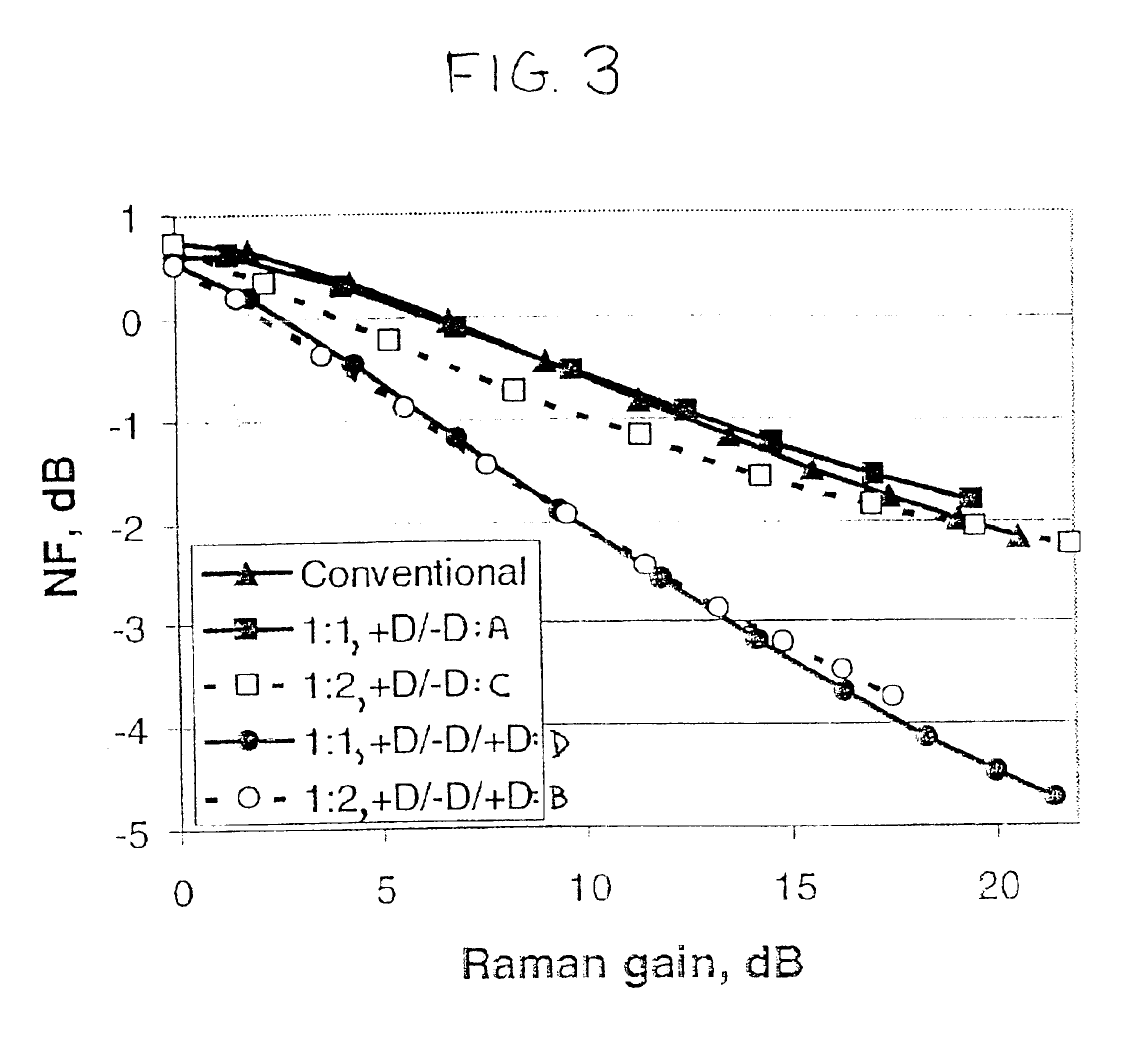Dispersion-managed cable for raman-assisted transmission
a technology of raman-assisted transmission and dispersion management, which is applied in multiplex communication, manufacturing tools, instruments, etc., can solve the problems of reducing the signal to noise ratio (snr) at the receiving node, affecting the transmission speed of the cable, and accelerating the growth of noise, so as to reduce power loss
- Summary
- Abstract
- Description
- Claims
- Application Information
AI Technical Summary
Benefits of technology
Problems solved by technology
Method used
Image
Examples
first embodiment
[0045]an apparatus for transmitting an optical signal is shown by the block diagram of FIG. 1. The apparatus includes an optical transmitter 1 that generates an input optical signal to be transmitted from an input end to an output end of an optical fiber. An optical coupler 20 optically couples an optical receiver 2 and a pump light emitting device, preberably a Raman pump laser 3, to the output end of the optical fiber.
[0046]The term “α-profile” or alpha profile of an optical fiber refers to a refractive index profile, expressed in terms of Δ(r) %, where r is radius, which follows the equation,
Δ(r) %=Δ(ro)(1−[¦r−ro¦ / (r1−ro)]α),
where ro is the point at which Δ(r) % is maximum, r1 is the point at which Δ(r) % is zero, and r is in the range ri≦r≦rf, where delta is defined above, ri is the initial point of the α-profile, rf is the final point of the α-profile, and α is an exponent which is a real number.
[0047]Referring to FIG. 1, the optical fiber span preferably comprises a section of...
third embodiment
[0064]an apparatus for transmitting an optical signal comprises a first section of optical fiber, preferably a PDPS fiber, which preferably has a local dispersion of at least 10 ps / nm. Preferably, the first section of optical fiber has an Aeff of at least 80 μm2. The second section of optical fiber preferably comprises NDNS fiber, preferably having an Aeff less than 30 μm2. The third section of optical fiber preferably comprises optical fiber with an Aeff less than that of the PDPS optical fiber section and greater than that of the NDNS optical fiber section. Preferably, the third section of optical fiber has an Aeff in the range of 30 μm2 to 80 μm2.
[0065]The aforementioned advantages of the first embodiment also apply to this third embodiment. The use of PDPS fiber and NDNS fiber partially compensates for dispersion in the optical fiber along the optical transmission path and provides amplification earlier in the transmission path to reduce the amplification of noise.
[0066]FIG. 3 s...
PUM
| Property | Measurement | Unit |
|---|---|---|
| area | aaaaa | aaaaa |
| length | aaaaa | aaaaa |
| area | aaaaa | aaaaa |
Abstract
Description
Claims
Application Information
 Login to View More
Login to View More - R&D
- Intellectual Property
- Life Sciences
- Materials
- Tech Scout
- Unparalleled Data Quality
- Higher Quality Content
- 60% Fewer Hallucinations
Browse by: Latest US Patents, China's latest patents, Technical Efficacy Thesaurus, Application Domain, Technology Topic, Popular Technical Reports.
© 2025 PatSnap. All rights reserved.Legal|Privacy policy|Modern Slavery Act Transparency Statement|Sitemap|About US| Contact US: help@patsnap.com



